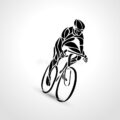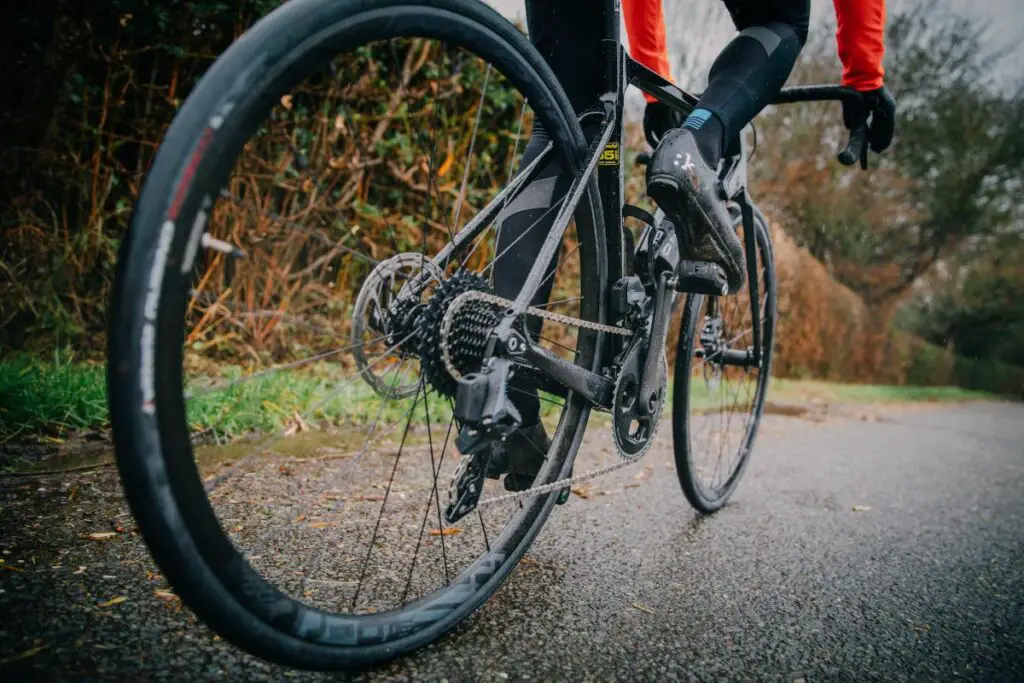How to increase cycling speed and power
Power is the ultimate achievement in cycling as the more of it you have the faster you can ride over a given distance.
Increasing your cycling power is critical for getting faster and improving performance. However many cyclists tend to do a lot of riding on the wrong terrain, intensity, and effort while aiming for real physiological change.
When it comes to cycling power there are ten workouts that you can do to gradually improve. These are
- Ride in Bigger Gears
Riding in bigger gears at the same cadence over certain terrain usually conditions the body resulting in higher power output over time. By always spending more time in a bigger gear, you will have to expend more energy and over time you will develop the muscular endurance needed to tackle that gear without too much effort.
- Ride Uphill
Riding uphill is one of the most effective ways of increasing muscular endurance.
By riding uphill you will usually have to use a relatively large gear at a moderate cadence which will mean you will be pushing harder on the pedals. You can amp up your power improvement by increasing the uphill distances over time or doing short-intensity sprint intervals up steep hills.
- Ride into Headwinds
If you do not live in a locale with steep hills, then the second-best option is to ride into headwinds. The best way to do this is to ride on windy days and ride a rectangular circuit about 2 miles in length.
By pedaling at a moderately large gear you should accelerate into the wind and reduce your cadence to recover in crosswinds and tailwinds.
- Use Block Training
Block training usually involves very hard workouts for two to three consecutive days and then recovery for about a similar amount of days which can be days of easy workouts or no exercise at all.
This allows you to facilitate the physiological adaptation process that allows you to recover from the immense stress cycling places on your cardiovascular and musculoskeletal systems.
- Do Some Power Bursts
One of the most effective ways of improving muscular endurance and leg strength is by doing power bursts. This typically involves warming up thoroughly followed by spinning at a low cadence and speed and then shifting to a big gear while seated.
Lastly, pedal hard for about 15 seconds and then shift to a small gear and spin easy. Repeat several times and up the reps with each session.
- Do Cadence Intervals
Elevating your pedal cadence can be an effective way of improving your power output. You can usually do this by a moderate-intensity workout that allows you to train at about 85% of your capacity which will also enhance your neuromuscular coordination.
- Ride Long Distances
Going on long rides will significantly improve your muscular and aerobic endurance. Long rides improve endurance as they stress the muscular and cardiovascular systems thus allowing your systems to adapt over time.
However, it is critical to remember that you should only be increasing the distances ridden slowly as long-distance is a relative term that will depend on factors such as the fitness and the experience of the cyclist.

- Implement the 75% Rule
Under this regimen, the rule is that on any given training week, at least 75% of your time or miles covered needs to be below 75% of your maximum heart rate. This means that most of your recovery needs to be endurance-building and easy recovery rides.
To get faster 10% of your riding needs to be between 90-100% minimum heart rate and between 106 to 150% of your functional threshold power. Such a regimen allows one to modify their physiology by combining intense effort with adequate recovery and endurance work.
How to increase cycling speed
There are all manner of ways to increase Cycling Speed but the most important ones include:
- Pedal more
- Brake Less
- Ride in a group
- Work on your cadence
- Get More Aerodynamic
- Use your Bike’s Gears more Efficiently
- Keep Track with a Bike Computer
- Train Indoors
- Try Intervals
- Ride Off-road
- Practice climbs
- Ride a Tailwind Home
- Get Your Feeding Down
- Upgrade Your Tyres
- Go Lycra
- Maintain your Bike
4 strength workouts you really need for cycling
There are several conditioning and strength exercises that you need to do for cycling. While cycling is for the most part about producing power one leg at a time, it is usually not all about the legs.
If you need to build strength you also need a strong core for climbing, bike handling, and overall endurance.
Some of the exercises to do include:
Lunges – These are great strength exercises for cycling as you will usually do them one leg at a time which is similar to riding a bike. Targeting the hamstrings, hips, and quadriceps, you can do the reps with or without weights depending on your fitness levels.
Planks – If you are looking to build core strength then you should do planks. These are effective at working the shoulders, lower back, and abs. The best thing about planks is that they can be done anywhere.
Squats – Squats work the hamstrings, glutes, quads, and hips and will help improve endurance as well as maximum strength and power. As you get used to squats you can improve your progress with weights and more reps
Single-Leg Deadlifts – These are basic exercises that target the hamstrings and hips helping to correct muscle imbalances. With proper technique and weights coupled with increasing reps, they will be great for improving leg power and activating the core.
Limits to cycling power
Power is not unlimited which is why pacing is a very critical element whenever you are cycling for endurance and power. As such it is important to apply pacing correctly if you are racing in order to get favorable outcomes.

In addition to fitness, there are several factors that determine the limits of power and endurance which include:
Gender – Men will usually have higher power output as compared to women since they typically have more muscle mass and hence their muscle fibers tend to produce greater contractile forces.
Age – The older you are the less power you will have as muscle mass tends to decrease alongside a change in fiber type. However, you can reduce the deterioration by maintaining physical fitness through training.
Body Mass – You get power from the size of the muscles and how fast they can contract. Still, the more forcefully they can contract and the bigger they are the more power you can produce hence making training to increase muscle size and reactions critical.
Body Type – Skinny, long, and lean cyclists may produce less power as compared to a well-built, stocky, and strong person. However, it is important to note that power-to-weight ratios usually favor lean skinny types on uphill climbs.
How long does it take to increase cycling power?
Most studies show that training for a week is sufficient to start training for building power. You can reduce training sessions to once a week to maintain any gains after ten weeks of training or when you plan to spend more time riding.
It is important to always listen to your body and as such there are no hard and fast rules. As such how much it takes will depend on how much you push yourself.
Remember that it is better to go slow and improve slowly rather than do too much and get injured which will just reduce or completely stall your progress.
Is 200 watts good cycling?
There is no exact number of wattage that applies to all riders given that everyone is different. Nonetheless, most beginner cyclists may attain a wattage of between 75-100 watts while cycling for an hour.
Fit participants such as people who cycle every day may get more than 100 watts riding for an hour.
How many watts do Tour de France riders produce?
Tour de France cyclists can generate immense amounts of power for a very long time as compared to ordinary cyclists. For about 20 minutes, a fit recreational rider can output 250 to 300 watts of power. Meanwhile, the Tour de France cyclist can produce upward of 400 watts over a similar period.


